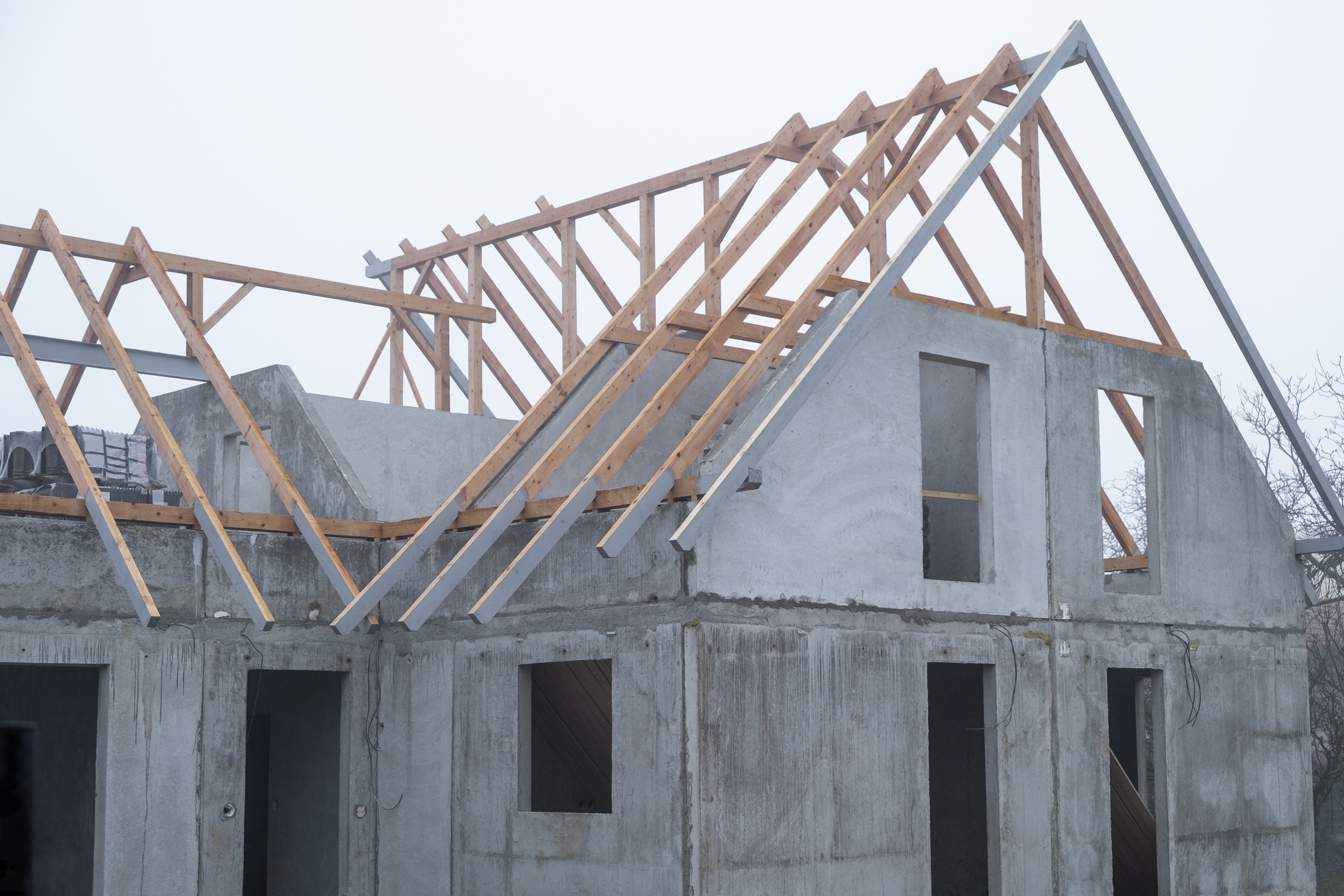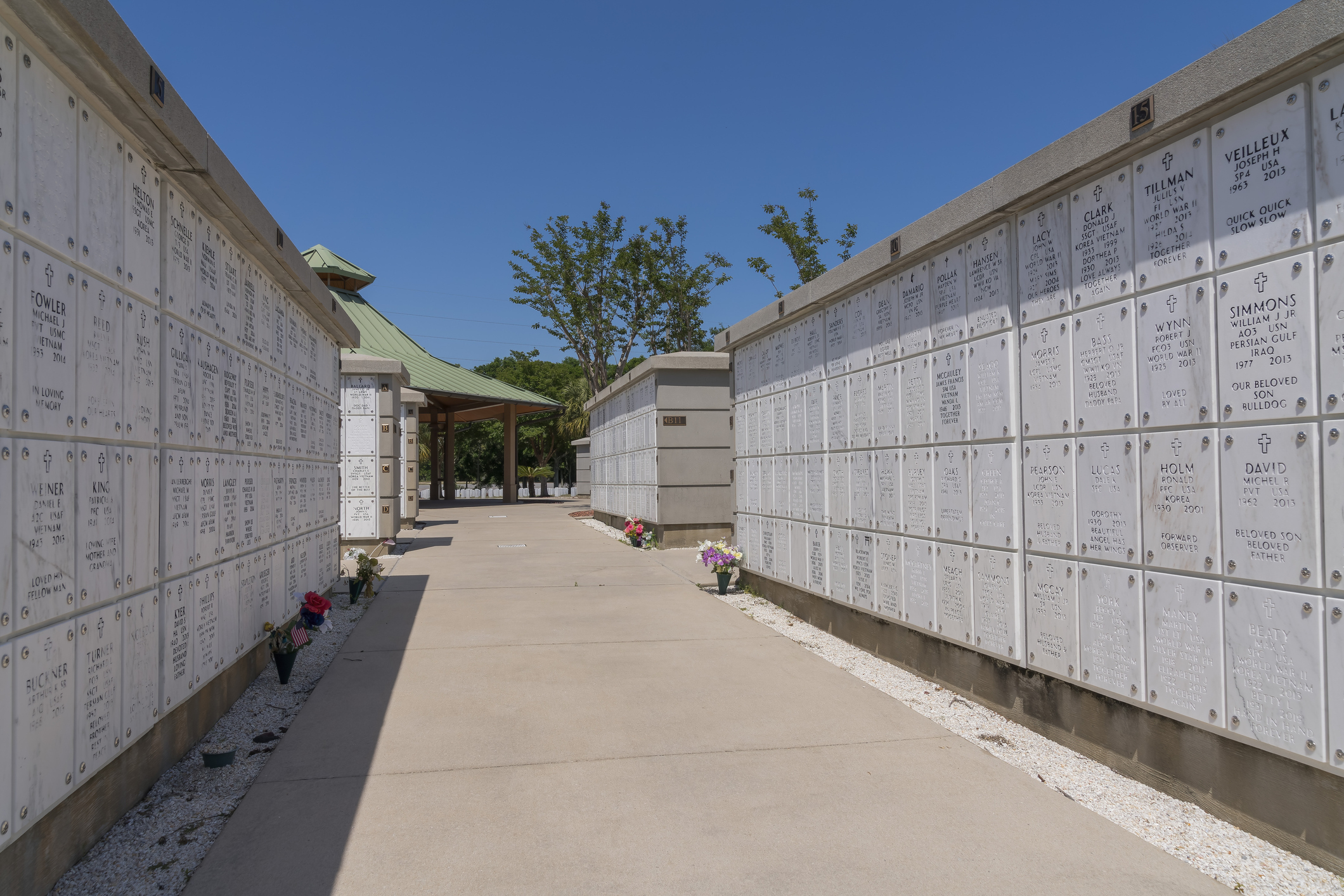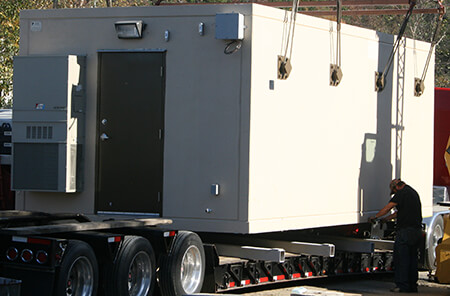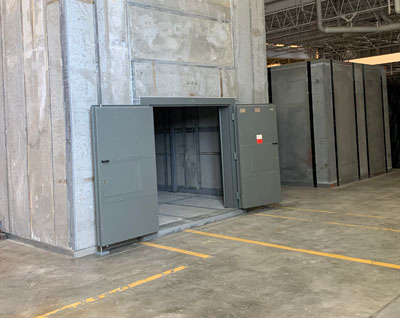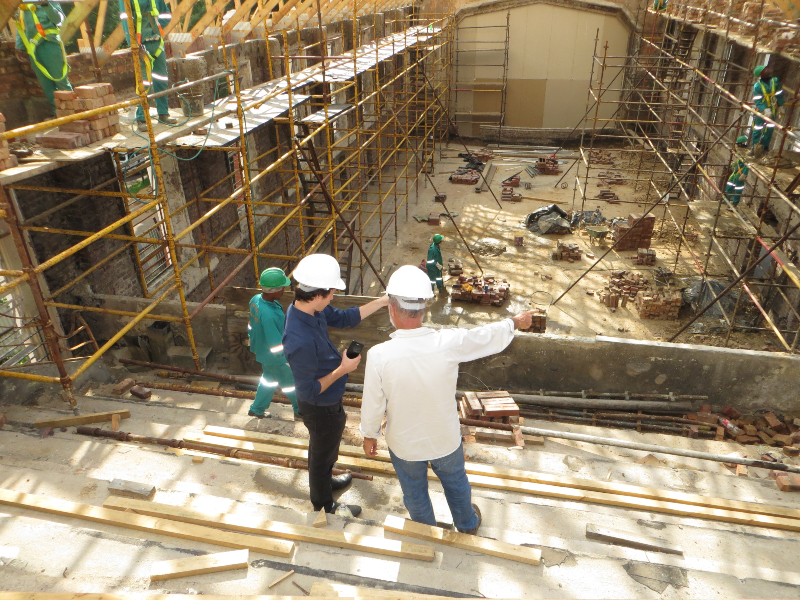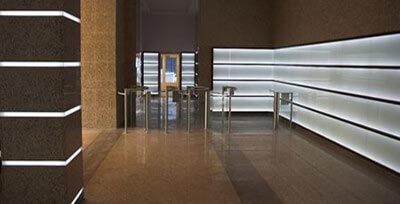Precast Panel Finishes
Precast concrete panels offer a variety of finishes that can enhance both the aesthetic appeal and functional performance of buildings. Here’s an overview of common finishes for precast concrete panels:
Types of Panel Finishes
- Exposed Aggregate Finish
- This finish involves exposing the natural aggregates within the concrete mix by removing the top layer of cement paste, either through the chemical retarders or mechanical means like sandblasting or water washing.
- Advantages include providing a textured, natural look that can be very appealing. It’s durable and slip-resistant, making it suitable for exterior applications where aesthetics and safety are important.
- Considerations include requiring careful mix design to ensure the aggregate looks uniform and aesthetically pleasing. The process can be labor-intensive
- Smooth of Troweled Finish
- Acheived by troweling the surface of the concrete while its still wet, resulting in a smooth, polished look.
- Advantage include being easy to clean, and can be painted or further treated with anti-slip additives or textures.
- Considerations include potential to be slippery when wet if not treated with anti-slip additives or textures.
- Architectural Form Liners
- Form liners are placed inside the formwork before casting, imprinting patterns, textures, or designs onto the concrete surface.
- Advantages include allowing for a wide range of textures (e.g. wood grain, stone, brick) and designs, offering architectural flexibility and visual interest.
- Considerations include that initial cost can be high due to form liner expenses and there may be slight variations in pattern due to the casting process.
- Sandblasted Finish
- Sandblasting removes a thin layer of the concrete surface to reveal a more uniform texture or to enhance the texture of form liners.
- Advantages include the ability to provide a consistent texture, can be used to correct minor imperfections, and enhances the natural look of the concrete.
- Considerations include requirement of careful control to avoid over-blasting, which can damage the concrete surface.
- Colored Concrete
- Pigments or integral color are added to the concrete mix to achieve a consistent color throughout the panel.
- Advantages include design flexibility with a wide range of colors, can mimic other materials like stone or brick.
- Considerations include potential color consistency challenges, especially with exposure to the elements over time.
- Stained Concrete
- Chemical stains are applied to the surface after casting, reacting with the concrete to produce a variegated color effect.
- Advantages include the ability to create unique, natural-looking color variations that cannot be achieved with integral color.
- Consider that the final color can be unpredictable due to variations in concrete mix and application conditions.
- Polished Concrete
- Involves grinding and polishing the concrete surface to achieve a high gloss finish, similar to polished stone.
- Advantages include extreme durability, low maintenance, and can be used indoors or outdoors. Provides a sleek, modern look.
- Considerations include requirement of specialized equipment and skilled labor, which can increase costs.
- Textured Finishes
- Various tools or techniques are used to create patterns or textures on the concrete surface, like broom finishes for slip resistance or bush-hammered for a rough texture.
- Advantages include ability to enhance slip resistance and can be used for both functional and aesthetic purposes.
- Consider choosing a texture that is based on the intended use and maintenance requirements.
- Integral Insulation with Finish
- Some precast panels incorporate insulation materials within the panel, which might affect the finish. For example, EPS insulation might be visible on the edge or require a special treatment.
- Advantages include combining structural, thermal, and aesthetic properties into one element.
- Requires consideration and detailing at joints and edges to maintain the finish’s integrity.
- Special Coatings
- After casting, panels can be coated with materials like elastomeric coatings for waterproofing, reflective coatings for heat reduction, or decorative finishes.
- Advantages include addition of functionality (UV protection, water resistance, etc.) and can change the appearance significantly.
- Consideration of the longevity and maintenance of the coating should be a part of the selection process, as well as how it adheres to the concrete.
Considerations for Choosing Finishes
- Durability
- The finish should be durable enough to withstand environmental conditions, especially for exterior applications.
- Aesthetics
- The finish should complement the architectural design of the building.
- Maintenance
- Consider how easy it will be to maintain the finish over the life of the structure.
- Cost
- Different finishes have varying costs, both in terms of materials and labor.
- Functionality
- Consider the functional requirements, like slip resistance, thermal properties, or acoustic performance.
Each finish type offers unique benefits and challenges, and the choice often depends on the project’s specific needs, budget, and aesthetic goals. Precast concrete’s versatility in finishes makes it a popular choice for both modern and traditional architectural designs.
Contact Us Today
For more information on our products and services, give us a call today at 919-742-3132, or visit our Contact Us page. Let The Carolina Precast Company help you bring your vision to life with precision and excellence.
